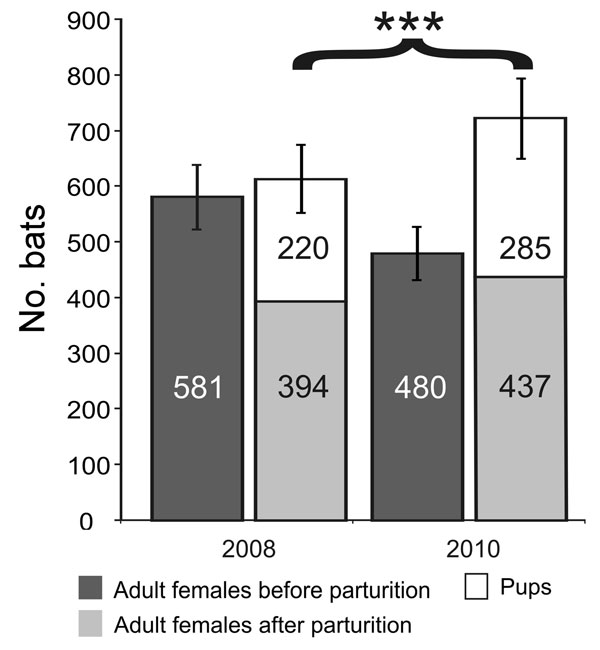Volume 17, Number 3—March 2011
Research
Amplification of Emerging Viruses in a Bat Colony
Figure 4

Figure 4. Myotis myotis bat maternity roost composition and reproductive success. Age composition of bats composing the M. myotis maternity roost under study are depicted before and after parturition in 2 different sampling years, 2008 and 2010. The y-axis represents the number of individual bats, additionally indicated in individual bars. The brace and asterisks represent statistical significance of the gain in total colony size after parturition in 2010, compared with colony size in 2008. Error bars represent an assumed 10% error margin in counting.
1These authors contributed equally to this article.
Page created: January 24, 2018
Page updated: January 24, 2018
Page reviewed: January 24, 2018
The conclusions, findings, and opinions expressed by authors contributing to this journal do not necessarily reflect the official position of the U.S. Department of Health and Human Services, the Public Health Service, the Centers for Disease Control and Prevention, or the authors' affiliated institutions. Use of trade names is for identification only and does not imply endorsement by any of the groups named above.